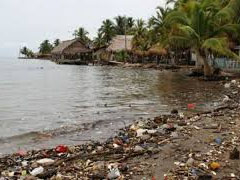 Damage is the result of harming (harming, hurting, causing harm). Environmental , on the other hand, is that linked to the environment or specifically, in some cases, to the environment (the natural circumstances that surround a living being).
Damage is the result of harming (harming, hurting, causing harm). Environmental , on the other hand, is that linked to the environment or specifically, in some cases, to the environment (the natural circumstances that surround a living being).
The idea of environmental damage , therefore, is used to refer to a detriment to the conditions of nature . Environmental damage is usually caused by pollution .
For example: “Opposition deputies filed a complaint against the mining company for alleged environmental damage” , “The oil industry generated serious environmental damage throughout the region” , “Scientists analyze how to reduce the environmental damage caused by productive activity” .
Suppose that a company dedicated to the manufacture of cleaning products throws its industrial waste into a river , without applying any type of treatment. This action contaminates the water, affecting the species that live in it and all the people who are around the river. The company, with its conduct, generates environmental damage.
In all legislations there are laws that punish those responsible for environmental damage. There are regulations that establish various guidelines to prevent damage from occurring: those who do not comply with these regulations and cause damage are punished.
It should be noted that a natural disaster can also cause environmental damage. If a fire breaks out in a forest due to high temperatures and drought, there will be very serious environmental damage. In this case, the authorities have the responsibility to prevent possible sources of fire and the obligation to act quickly to put out the fire and minimize the damage.
Another way of thinking about environmental damage is as a significant, adverse and measurable change in some natural resource , such as a habitat, the waters of a river, the shores of the sea or certain wild species that are protected. This alteration almost inevitably affects the services that rely on these resources, and that is why environmental damage can also be defined from this perspective.
It is worth mentioning that there is a specific regulation regarding soil repair, which is different from what must be followed to counteract the effects of environmental damage on other natural resources, such as those mentioned in the previous paragraph.
To evaluate the significant nature of a given environmental damage, that is, the degree to which it impacts the spaces or individuals that are affected by it, the basic state is taken as a reference and comparisons are carried out using data. measurable, such as the following:
 * the number of individuals, the extent of the area in which they are found or their population density;
* the number of individuals, the extent of the area in which they are found or their population density;
* the degree of rarity and threat of the habitat or species that has received environmental damage;
* the role of the area or particular individuals with respect to the conservation of the habitat or the damaged species;
* the ability to recover that resources that have suffered environmental damage have;
* the impact that damage has on the health of human beings.
For environmental damage to be significant, it is necessary that: the variations do not reach the natural fluctuations that are considered normal for the affected habitat or species; the changes respond to normal causes; The disorder is received by species or habitats that have a great capacity for recovery in a relatively short period of time.
Certain cases of environmental damage can be considered "legal"; for example, the one caused by an environmental evaluation carried out with the objective of guaranteeing biodiversity .
